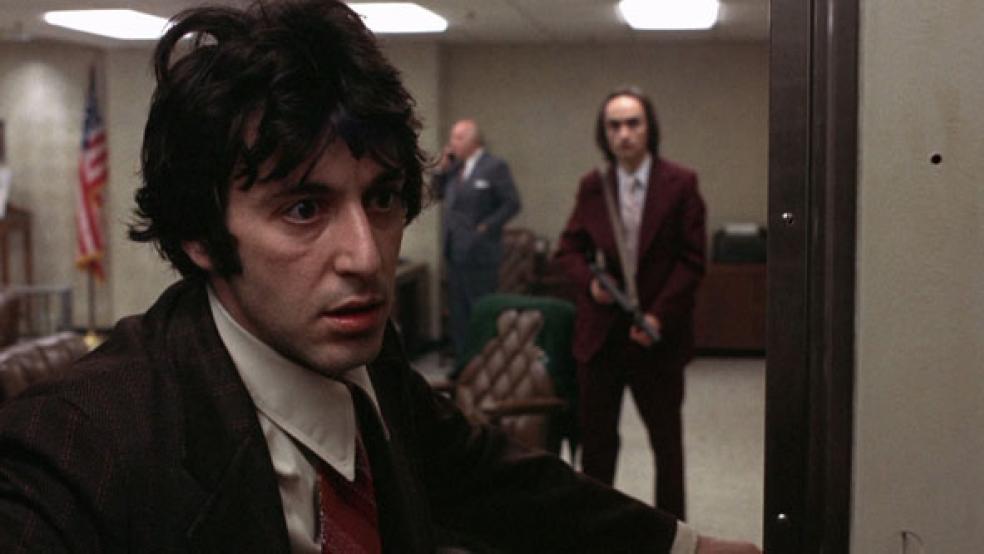Crime actually does pay – just not enough to make it worthwhile.
Freakonomics authors Steven D. Levitt and Stephen J. Dubner memorably wrote about how many Chicago crack dealers still lived at home with their mothers; they simply weren’t making enough money to be able to afford to move out. Now there’s further statistical proof to back up that old Dick Tracy saying.
In a paper published today in Significance, the magazine of the Royal Statistical Society and the American Statistical Association, economists at the University of Surrey and the University of Sussex in the U.K. looked at the profitability of bank robberies.
Professors Barry Reilly, Neil Rickman and Robert Witt were granted what they call “rare, perhaps unique, access to a normally confidential data set” from the British Bankers’ Association. They also looked at U.S. data made available by the FBI. “Surprisingly, bank robbers have never had the benefit, if that is the right term, of independent econometric analysis of their activities,” the three economists write. Using such an analysis, the trio concludes – in their very British way – that, “The return on an average bank robbery is, frankly, rubbish.”
RELATED: Cyber Crime Pays: A $114 Billion Industry
In the U.S., based on 2006 data, the average take from a bank heist was $4,330. In the U.K., it was much bigger: £20,331, based on 2007 data (or about $40,000 based on the exchange rates that year), while the maximum stolen was £425,610 (about $950,000). A third of the robberies yielded nothing, meaning that the average take from a successful robbery was around £30,000. Even so, the authors note that in some cases the crooks were apprehended and the money returned, leaving the real average somewhat lower. Some robberies are done by teams, though, so adjusting for that, the authors conclude that bank robberies yield “a very modest £12,706.60 per person per raid.”
That amount (about $25,000) might not sound so modest to lots of people. But the economists, being economists, kept going with their calculations. Based on an average U.K. wage for full-time workers of £26,000, they figure that an average robber, if successful, might steal himself six months worth of a modest lifestyle: “A single bank raid, even a successful one, is not going to keep our would-be robber in a life of luxury. It is not going to keep him long in a life of any kind.” And with each robbery, the probability of getting caught increases, meaning that “after four raids he is more likely than not to be inside.” Inside prison, that is.
A few factors do influence the relative success of robberies: the size of the gang, whether or not the crooks use guns and whether the bank has fast-rising security screens. “The bigger the gang, the greater the take,” the economists write. In fact, every additional gangmember raises the “expected value” of a robbery by £9033.20 on average, based on the stats – perhaps because more experienced robbers work in teams, and are more professional and organized about their crimes. “Even so,” the economists write, “if the gang splits the proceeds equally, although the total haul goes up the haul per person goes down.”
Armed robbers came away with £10,301 more than unarmed ones, on average. From an economics perspective, that’s to be expected. “The possible penalties are greater so one would expect the potential rewards to be greater as well,” the professors explain. But is the risk/reward tradeoff worth it? “On the face of it, however, the reward does appear modest, given the potentially harsher judicial penalties that apply in a conviction for an armed robbery,” the authors conclude.
Security screens, which separate the bank staff from the potential robbers in less than a second after being triggered, significantly reduced the chances that robbers would be successful and the expected haul they could get. “Given that 66% of bank raids are at present successful, the overall introduction of screens could potentially reduce the bank raid success rate in Britain by almost one-half.” But the cost of such screens, about £4,500 each in the U.K., is relatively high compared with the losses from robberies, which helps explain why the screens are only used in 12 percent of U.K. banks, and even fewer in the U.S.
The economists’ conclusion? “As a profitable occupation, bank robbery leaves a lot to be desired.” And would-be robbers, they note, seem to have learned this lesson. Bank robberies and attempted robberies are on the decline, both in the U.K. and the U.S., according to the report. Criminals have instead turned their sights on targets that seem more rewarding: security vans.





